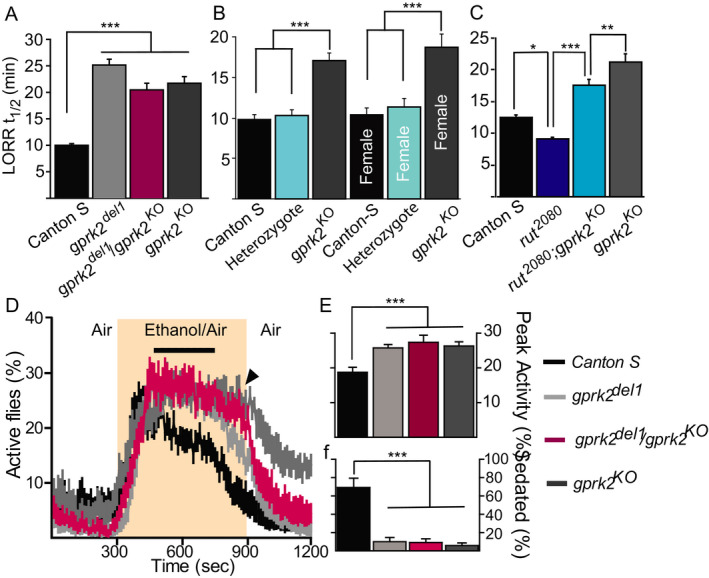Fig. 1.

Gprk2 mutants show decreased sensitivity to alcohol sedation but increased alcohol‐induced hyperactivity. (A–C) The loss of righting reflex assay was used to measure the amount of time that it took 50% of flies to lose posture control (LORR t1/2). Flies harboring different combinations of the gprk2del1 or gprk2KO amorphic alleles were compared to the wild‐type control (Canton‐S. CS; in a&b) and tested for their interaction with the rutabaga pathway (in C). n = 6 to 10. (D–F) The FlyGrAM assay was used to monitor real‐time locomotive activities (percentage of active flies) of Gprk2 mutants with ethanol vapor delivered at 300 to 900 seconds (shaded). There was significant interaction between genotype and time as tested by the 2‐way ANOVA test, p < 0.0001 F(354, 5192) = 4.10 in D). The 4‐minute peak activities (black line in D&E) and percentage of sedated flies (f) at the end of alcohol exposure (arrowhead in d) were averaged and compared between Canton‐S flies (black) and Gprk2 mutants (gray or magenta). n = 12. Mean ± SEM. *p < 0.05, **p < 0.01, ***p < 0.001 according to the 1‐way ANOVA with a Bonferroni post hoc test (A–C, E) or Kruskal–Wallis test followed by the Dunn’s multiple comparison test (F).
